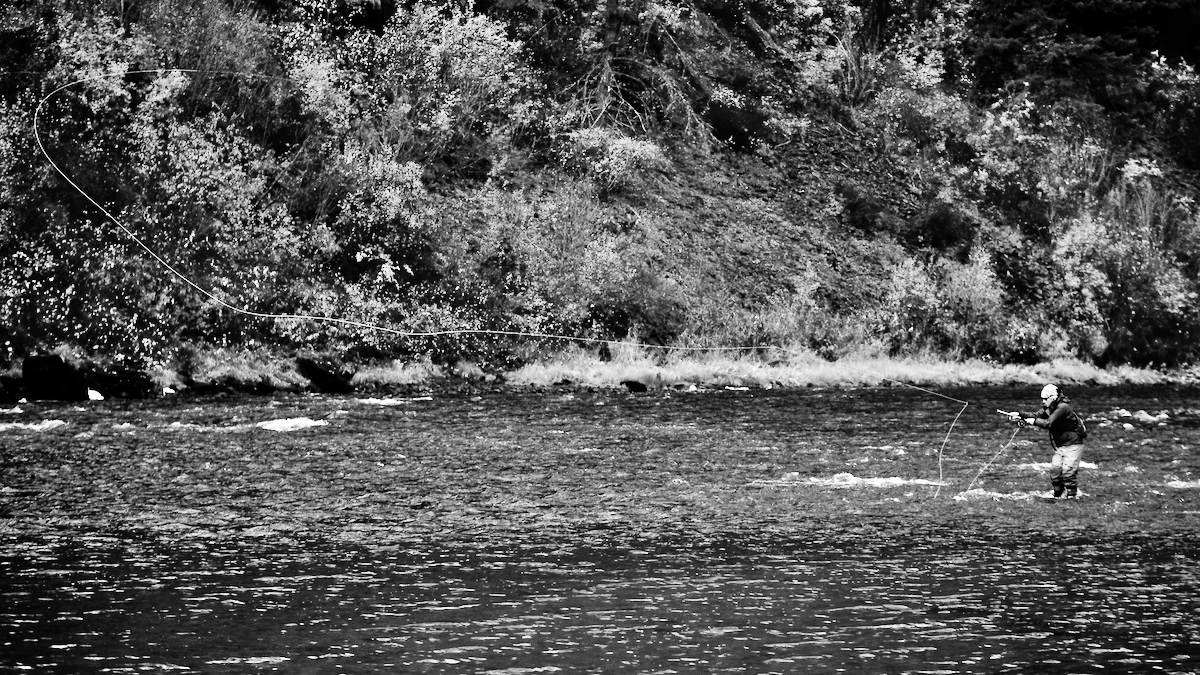[vc_row][vc_column][vc_column_text]It’s really not that complicated, but the massive amount of advice from all corners of Spey-dom seems to confuse those new to the style. Here’s a few diagrams from our Spey Clinic presentation. CLICK TO ENLARGE[/vc_column_text][us_image image=”8630″ size=”full” link=”” onclick=”lightbox”][us_image image=”8629″ size=”full” link=”” onclick=”lightbox”][vc_column_text]
SCANDI & SKAGIT
Both Scandi and Skagit lines are SHOOTING HEAD SYSTEMS. Shooting heads are not new, having been around since at least the 60’s? About as long as me. I started to look for the history of Shooting Heads on Google, but screw it. If you still read books, you can find information on the use of short shooting heads attached to mono for both Steelhead and Saltwater fishing years ago. Tha’ts what Amnesia was invented for. Not the butt section of your sleazy nymph rig.
BACK to the Spey stuff. Like I said, they are both shooting head systems, and in reality very similar. They have also been produced as “integrated” shooting heads (1 piece) but those days seem to be gone. You definitely want the versatility of a head system so you can quickly change the style or weight of your shooting head based on conditions, etc.[/vc_column_text][us_image image=”8628″ size=”full” link=”” onclick=”lightbox”][vc_column_text]
TRADITIONAL
And here’s a profile of a generic traditional – or ‘long belly” fly line. If you look closely, you’ll see that I have specified the length as 55′ – 85’. That usually means 55′ +/- (mid-belly) OR 85′ +- (long belly). Yes they come in different sizes, but those are pretty close to some typical lengths. Please don’t comment or email me that you own a 49′ line that I didn’t mention. I got it.
Missing is the Uber-traditional Double Taper. That what me and my buddies used when we started doing this. RIO did not yet exist, therefore modern spey lines did not yet exist.
If we were all still using DT lines on our spey rods, I doubt I would be talking about this. Much tougher to cast.
If you want to learn more about Spey Lines, come to our free Spey Clinics (next one Dec. 10), or stop by the shop and talk to Sara, Ninch, Mark or myself.[/vc_column_text][/vc_column][/vc_row]

Good stuff!
The abundance of these both type of lines does make head of newcomers turn too…
Can you advise a minimum set up to start with?
We like a 6126 One or Method with a Scandi 390 Jay. Or go the Skagit route. But here are a number of ways to go!
I have only used the spey cast on one trip found it most enjoyable to use the rod came with guide, I noticed a smal yellow
thread had been tied and glued to the line when I used the rod I would retrieve the line until I saw the yellow marker break
water then initiate anther cast.
Can you tell me how far from the end of the fly line this yellow marker would have been, clearly this was the optimum length
of line that created the trust for the cast.
Thanks for you advice
Different lengths for different lines. Could not tell you Bernie as this distance is different with every line weight. Thanks.